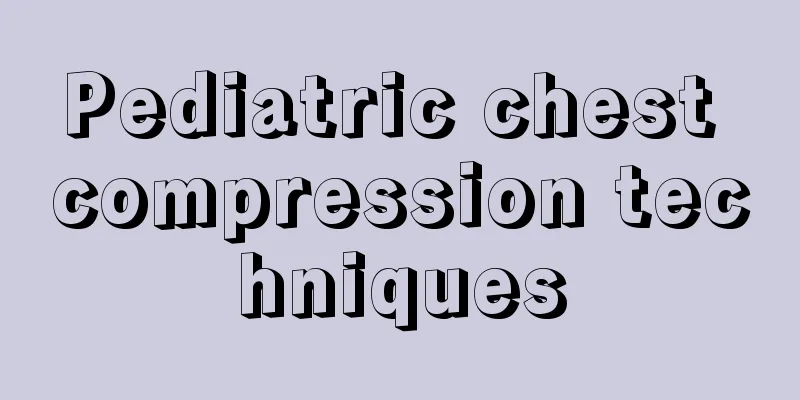Pediatric chest compression techniques

|
We know that when someone drowns or has respiratory arrest, we will perform chest compressions. For adults, we already know this very well. However, if a child is in an emergency and needs chest compressions, do you know what to do? What is the method of external chest compression in children? If you want to know the answer, please read the following carefully! When using external chest compression to rescue children with cardiac arrest, the correct location, appropriate force, proper operation and appropriate frequency should be used according to the physiological and anatomical characteristics of the children of different ages to achieve good results. Generally, the ratio of heart compressions to mouth breathing is 4:1. The child should lie on a hard bed, or place a wooden board behind him. When the pressure is effective, the child's carotid and femoral artery pulsation can usually be felt, and his lips may gradually turn red. (1) First check whether the patient's airway is obstructed. If there is any foreign object in the mouth (including dentures), it should be removed promptly to lay the foundation for artificial respiration or tracheal intubation. Because maintaining circulation and respiratory functions are equally important and both are indispensable. (2) Accurate and timely assessment of cardiac arrest and decisive and effective external cardiac compression are the keys to successful rescue. While performing chest compressions, establish good intravenous access to ensure that resuscitation drugs can take effect promptly and effectively. (3) The operator must be accurate, skilled, and his movements must be in place. Attention should be paid to pressing the correct part and the accuracy of the operation technique. The pressure should be steady, even and regular. (4) The pressure should not be applied too low to avoid damaging the liver, stomach and other internal organs. The pressure should be appropriate. Too light will not be enough to promote blood circulation; too heavy will cause sternum fracture and lead to hemothorax. (5) CPR should be performed for 20 to 30 minutes. For patients suffering from hypothermia, drowning, electric shock, drug poisoning, hyperkalemia, etc., the time for CPR can be appropriately extended. After reading the above, I believe you already know the method of external chest compression in children! Knowing how to perform pediatric chest compressions can help you save a life in an emergency. Children's bodies are still very fragile. When performing external chest compressions, you must pay attention to the strength to avoid excessive force that may cause injury to the child. |
<<: What causes heart pain in children?
>>: How to treat chronic pharyngitis in children?
Recommend
Common physiological phenomena in infants
Nowadays, every child is the treasure of the fami...
Scar repair methods for children
What are the precautions? This is directly relate...
What should I do if my child cannot swallow pills?
Children's own resistance is very poor. If th...
What to do if your 13-month-old baby has short sleep time
A 13-month-old baby is already a big kid compared...
How to treat purpuric nephritis in children
Purpura nephritis in children is a systemic disea...
How to lose weight in children
Nowadays, childhood obesity has become a problem ...
What is the process of infant vision development?
When babies are growing, there are many issues to...
What to do if a 4-year-old child has cavities?
We all know that children are prone to tooth deca...
How to train your baby to sit at a few months old
The child has been lying down every day since he ...
Why is the 9-year-old girl's urine test showing high red blood cell and bacterial counts?
Nine-year-old children are in the period of growt...
Is childhood asthma contagious?
It is easy for babies to be infected with respira...
How to treat newborn baby's breathing problems
Some newborns or newborns have difficulty breathi...
Five-month-old baby's growth and development standards
The birth of a new baby is something every family...
What’s going on when my baby has small red bumps on the palms of his hands?
Many mothers may find that their babies have smal...
What to eat for children with hoarseness
Sore throat and hoarseness are just a drop in the...









